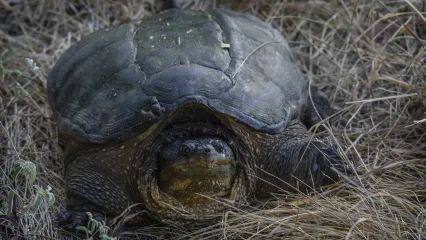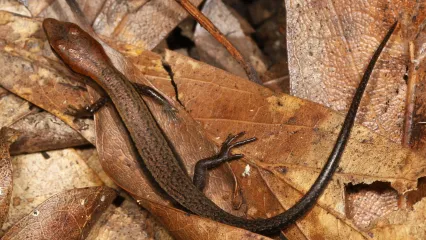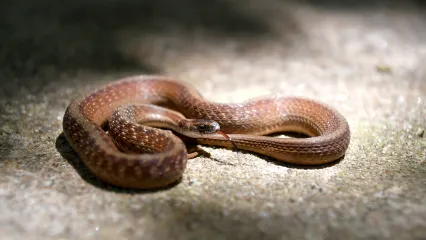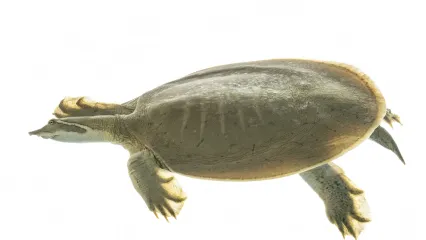
Description
The common snapping turtle can easily be distinguished from all but one other turtle species in eastern Oklahoma by a combination of saw-toothed keels along the dorsal surface of the tail, tail at least as long as the carapace, large head, webbed feet, small plastron, a carapace with three distinct keels, and a body that cannot be hidden within the shell. Snapping turtles are often locally called “loggerheads,” but they are not related to the true loggerhead turtle that lives in the oceans. The ridges on the carapace are reduced and nearly disappear in old adults. When disturbed, snapping turtles usually attempt to escape, but if cornered will attempt to bite by explosively extending the head with mouth open. They have sharp beaks and powerful jaws and can inflict painful bites that easily break the skin. Common snapping turtles are most easily confused with alligator snapping turtles, which also occur in eastern Oklahoma. Alligator snapping turtles reach much large size, have a much more extreme hook-like upper jaw, have very large and distinct ridges on the carapace, and have an extra row of scales between the marginal scales on the carapace and the large scales of the carapace. The tail of common snapping turtles has large dorsal projections giving a saw-toothed appearance. These are much reduced in alligator snapping turtles.
Size
Hatchling common snapping turtles are about the size of a nickel, and large adults can reach slightly more than 19 inches in carapace length and weigh more than 70 pounds. Adults usually average about 35 pounds.
Habitat
The distribution of the common snapping turtle extends from the Yellowstone River Valley in Montana east across the entire United States and north from southern Canada through southern Texas and to the tip of Florida (a different subspecies occurs in peninsular Florida.)
Life Cycle
Adult common snapping turtles reach sexual maturity at ages varying from 11 to 16 years and can live nearly 50 years in the wild. Thus they are long-lived and late-maturing. Females leave ponds during May and early June and move nearly a mile in search of appropriate nesting sites. Nests are dug in soil anywhere from very near to as much as 200 yards from the closest water. Nesting usually occurs in morning and females cover the nests after depositing eggs. Predation by raccoons, foxes, and other animals on nests is high, with very few nests surviving long enough to hatch. Most nest predation occurs within the first six days after eggs are deposited. Emergence from nests occurs in August and September. Because hatchlings are small, predation rates on hatchlings are high as they make the journey from the nest to water. Once snapping turtles reach adult size, very few animals can kill them. Long-term studies have shown that adult survivorship from year to year is greater than 90 percent under natural conditions. Common snapping turtles feed on nearly anything they can capture, including insects, crayfish, frogs, and snakes. They occasionally capture small water birds. They also eat dead fish and other carrion.
How To Observe
These turtles spend most of their lives on the bottom of ponds or slow-moving streams and are difficult to observe. During rainstorms they often move between bodies of water and can be seen at night crossing roads. During the nesting season (usually May), females move across land early in the morning in search of nesting sites.
(This profile was created by Dr. Laurie Vitt as part of a partnership between the Wildlife Department and the Sam Noble Oklahoma Museum of Natural History. It was funded as part of a larger State Wildlife Grant to survey and inventory amphibians and reptiles of the Wildlife Management Areas of Oklahoma: T-35-P-1.)


